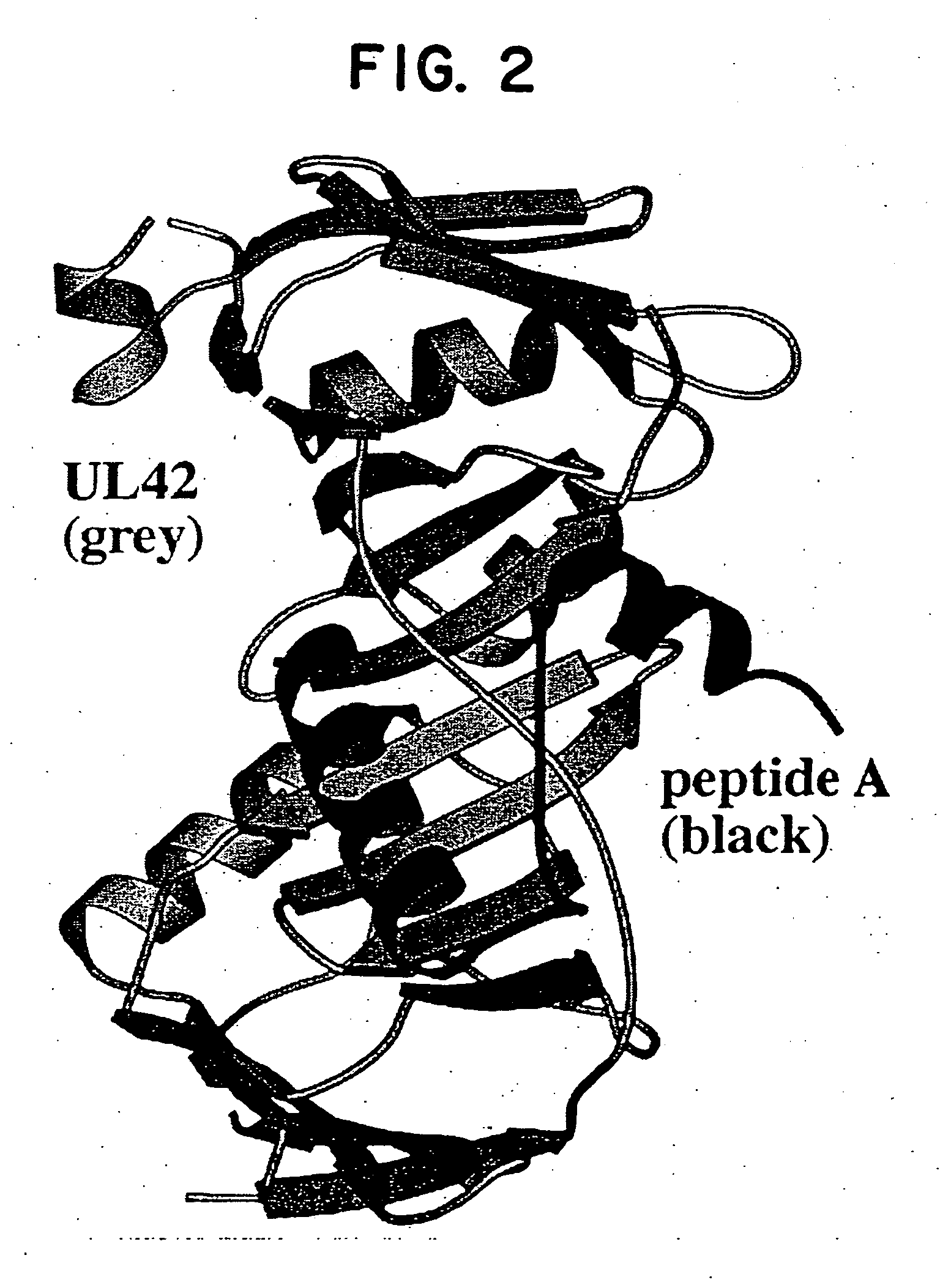Structure-based approach to design of protein-processivity factor interactions
a protein-processivity factor and structure-based technology, applied in chemical libraries, antiinfectives, climate sustainability, etc., can solve problems such as concerns about toxic effects
- Summary
- Abstract
- Description
- Claims
- Application Information
AI Technical Summary
Benefits of technology
Problems solved by technology
Method used
Image
Examples
Embodiment Construction
[0041] The instant invention encompasses the structure-based molecular design of inhibitors of processivity factor binding to proteins whose function is modified by interruption of the binding interaction between the protein and processivity factor subunits. Although the disruption of specific protein-protein interactions is a promising strategy for drug development, the nature of these interactions can make such disruption impractical. Many protein-protein interactions involve large surfaces or multiple contacts, making it unlikely that a single, small molecule could interfere with them. In this regard, the instant inventors have identified particular binding sites in the polymerase / processivity factor interface.
[0042]“Processivity factor” as used herein is defined as a protein that modifies DNA polymerase to continuously incorporate many nucleotides using the same primer-template without dissociating from the template.
[0043]“Binding site” as used in the instant invention is any ...
PUM
| Property | Measurement | Unit |
|---|---|---|
| wavelength scans | aaaaa | aaaaa |
| wavelength scans | aaaaa | aaaaa |
| pH | aaaaa | aaaaa |
Abstract
Description
Claims
Application Information
 Login to View More
Login to View More - R&D
- Intellectual Property
- Life Sciences
- Materials
- Tech Scout
- Unparalleled Data Quality
- Higher Quality Content
- 60% Fewer Hallucinations
Browse by: Latest US Patents, China's latest patents, Technical Efficacy Thesaurus, Application Domain, Technology Topic, Popular Technical Reports.
© 2025 PatSnap. All rights reserved.Legal|Privacy policy|Modern Slavery Act Transparency Statement|Sitemap|About US| Contact US: help@patsnap.com



